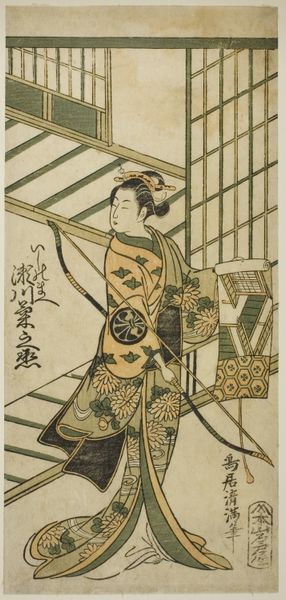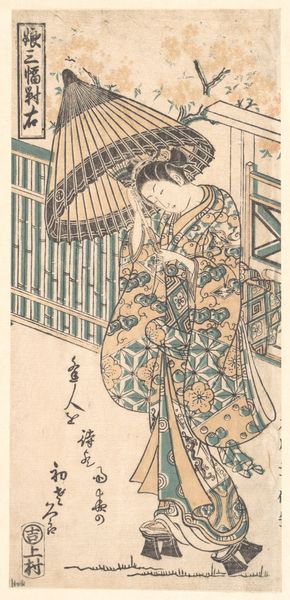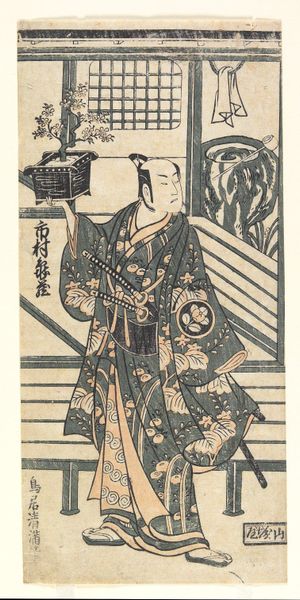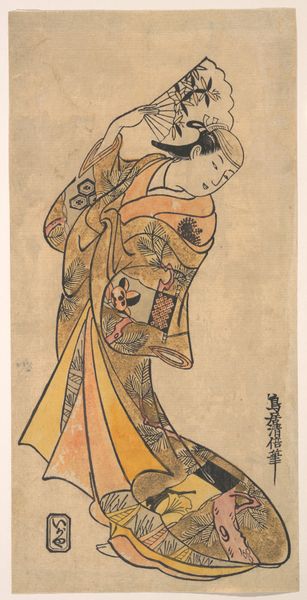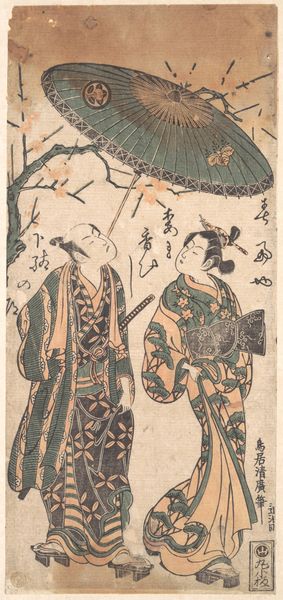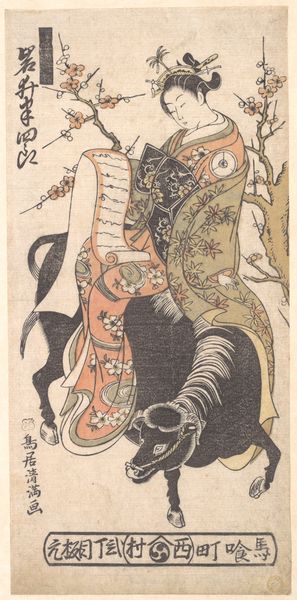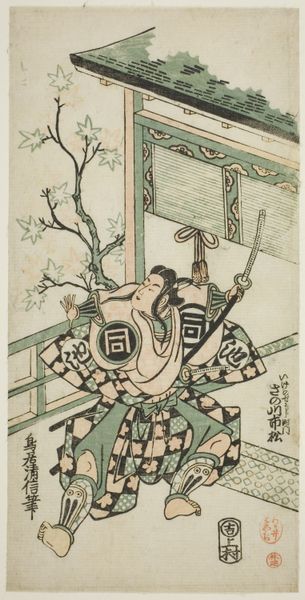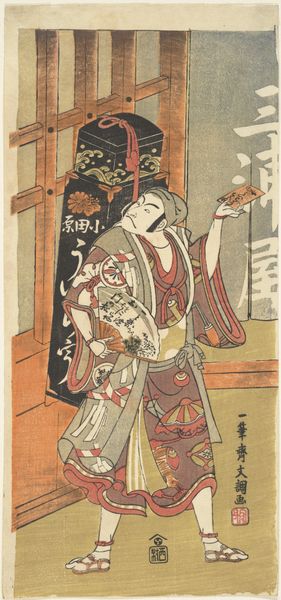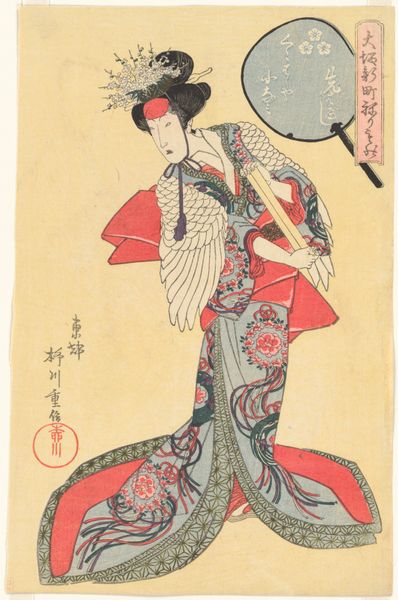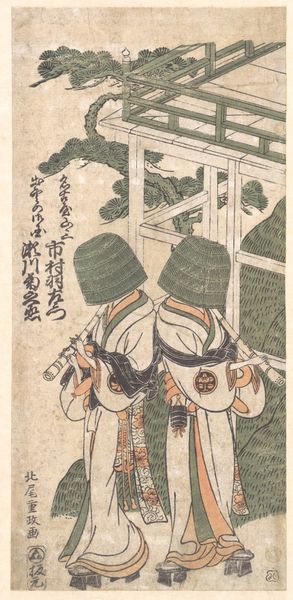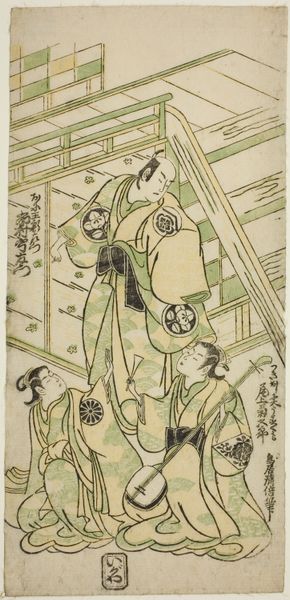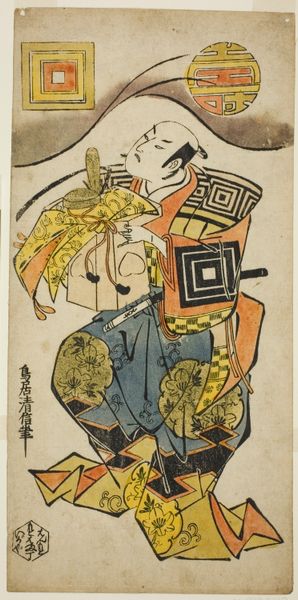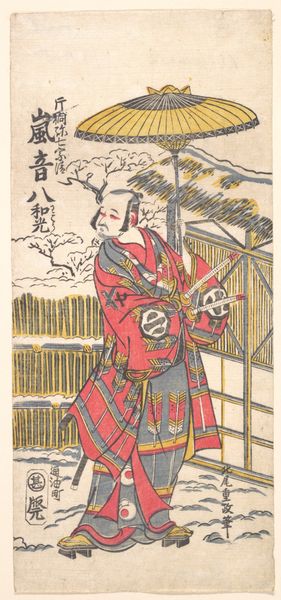
print, woodblock-print
#
portrait
# print
#
asian-art
#
ukiyo-e
#
woodblock-print
#
erotic-art
Dimensions: 12 7/32 x 5 5/8 in. (31.1 x 14.3 cm)
Copyright: Public Domain
Curator: Let's discuss Ishikawa Toyonobu’s “Summer Willow in the Breeze,” a woodblock print made sometime between 1738 and 1758. The piece currently resides at the Metropolitan Museum of Art. Editor: The first thing that strikes me is the delicate use of line and color. The rendering of the kimono, particularly its patterning, seems carefully considered—but overall there is a muted affect on first glance. Curator: Well, Ukiyo-e prints such as this one provide crucial glimpses into the pleasure districts of Edo-period Japan, spaces that offered women possibilities outside the usual patriarchal restrictions. Though the status of a courtesan or geisha remained complex and often exploitative, some attained celebrity status and wielded significant influence in shaping artistic trends and cultural values. Editor: That focus shifts our attention to the means of production then, especially since woodblock prints depended upon workshops of artisans contributing at various levels of involvement. One might consider then what a specific print—the quality of the lines, inks, and paper used, and also the labor it required to come to be—meant to potential owners. Were some, due to expense or higher quality control in printing, restricted from view, circulating only within elite circles? Curator: That’s a fascinating entry point, emphasizing how the material constraints both shaped and reveal a work’s audience and circulation. Here, for example, we have an interesting interplay between art and commerce, particularly regarding depictions of sexuality and desire. The figure here strikes a very precise balance; her slightly undone garment may signal access and availability to those viewers who are not female. The fan is a material that hides and also makes a material culture on its own. Editor: It’s undeniable the work's aesthetic considerations, the emphasis placed on the woman's features—but thinking about the materiality alongside the production, the act of circulating an image such as this one speaks to issues related to class and the economics of desire. What kind of desire did that fuel and where did those representations lead? It speaks volumes about the dynamics inherent in cultural exchange and control. Curator: Indeed, the image highlights complex, interlocking systems of representation and power within a specific moment in Japanese history. Thanks, that definitely provided more nuanced context. Editor: Likewise, focusing more specifically on how it physically came to be enriches the dialogue, doesn't it?
Comments
No comments
Be the first to comment and join the conversation on the ultimate creative platform.
